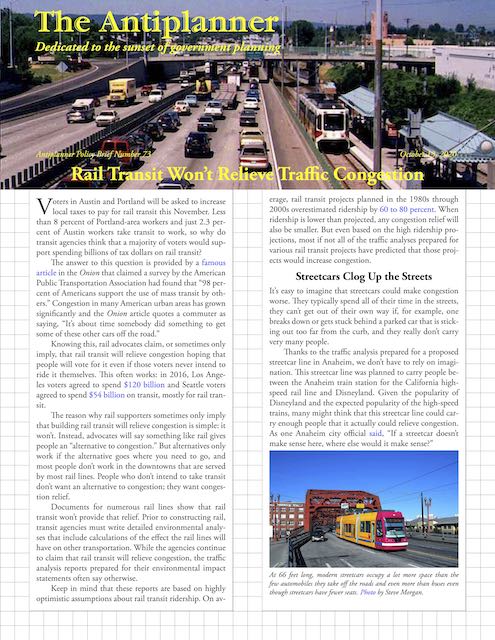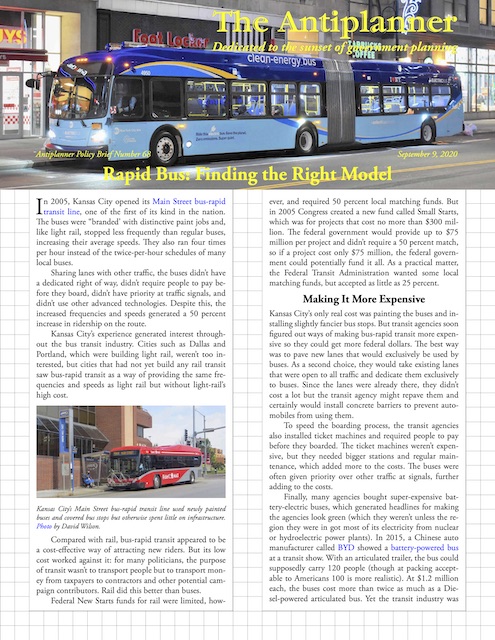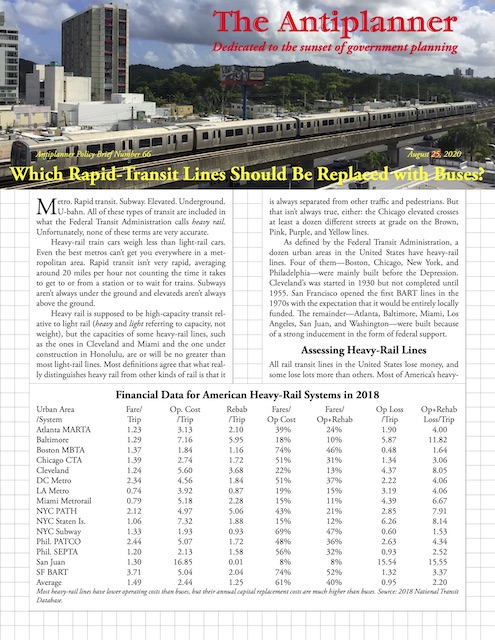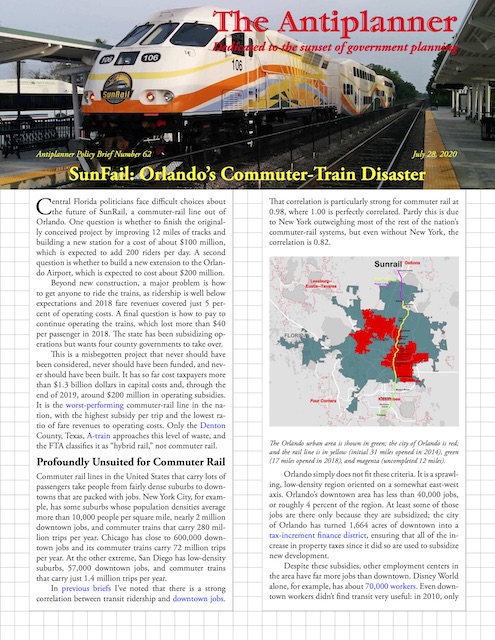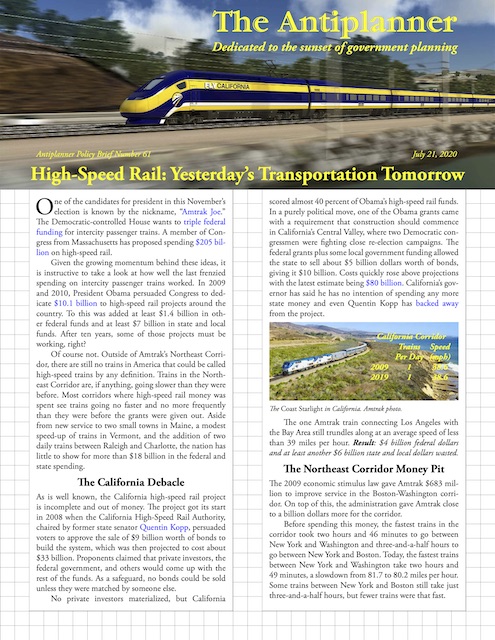Transit advocates routinely make deceptive claims about the advantages of transit over cars or rail transit over buses. Often those claims deal with the capacity of different modes of transportation to move people. This policy brief will scrutinize some of these claims.
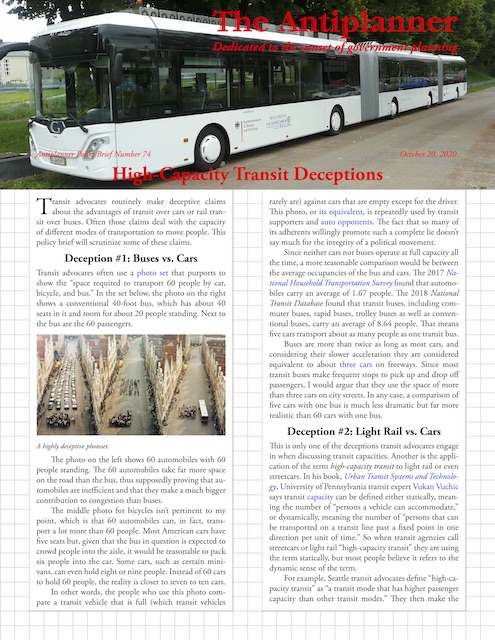 Click image to download a four-page PDF of this policy brief.
Click image to download a four-page PDF of this policy brief.
Deception #1: Buses vs. Cars
Transit advocates often use a particular photo set that purports to show the “space required to transport 60 people by car, bicycle, and bus.” The photo on the right shows a conventional 40-foot bus, which has about 40 seats in it and room for about 20 people standing. Next to the bus are the 60 passengers. Continue reading

